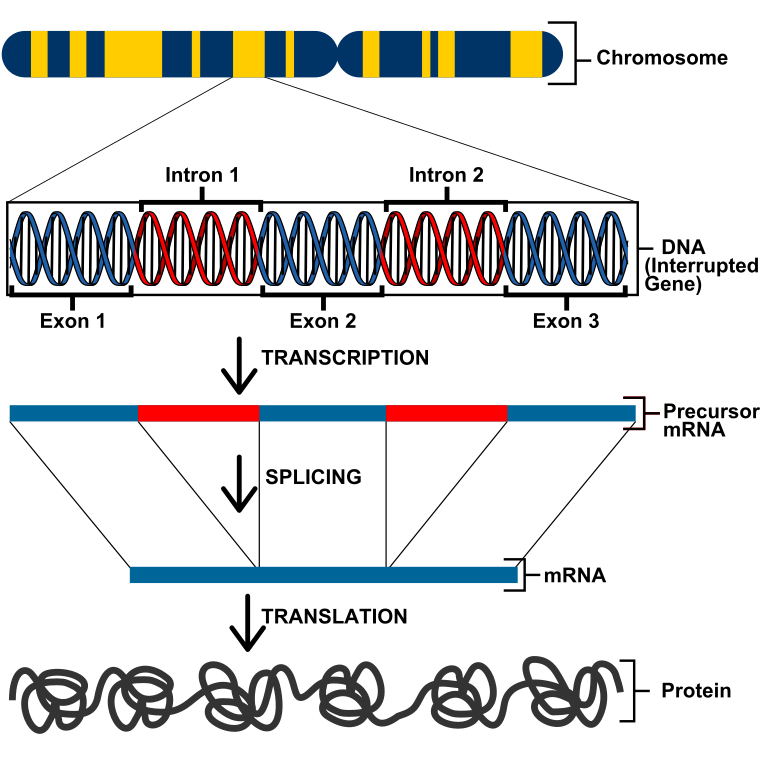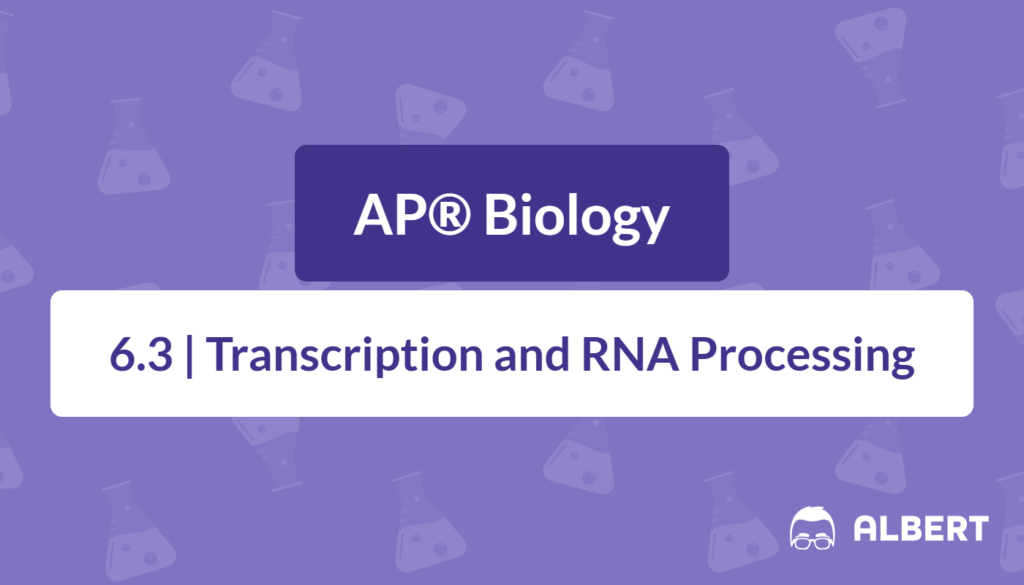What We Review
Introduction
Transcription is central to the flow of genetic information—often summarized as DNA → RNA → Protein. In human cells and other organisms, this process is essential for expressing the genes that drive the diverse functions of life. As an AP® Biology student, mastering transcription not only helps you grasp key molecular biology concepts but also provides a solid foundation for further studies and exams.
What is Transcription in Biology?
Transcription in biology occurs when the cell uses the information encoded in a DNA sequence to synthesize a complementary RNA molecule. This RNA molecule can go on to be processed into messenger RNA (mRNA), which then plays a crucial role in protein synthesis.
- Importance of Transcription:
- Converts genetic code in DNA into a more “portable” RNA form.
- Sets the stage for protein synthesis on ribosomes.
- Regulates which genes are expressed and when they are turned on or off.
The DNA to RNA Transcription Process
In the central dogma of molecular biology, DNA to RNA transcription leads to the production of mRNA, which then guides protein assembly in translation. While the overall concept is straightforward—copying DNA into RNA—the cell carefully regulates each step to ensure accurate gene expression.
- DNA → RNA → Protein (Central Dogma):
- DNA to RNA transcription is the first step.
- RNA’s message is then “translated” into a specific protein.
Steps of DNA Transcription
Transcription can be broken down into three main DNA transcription steps: initiation, elongation, and termination. Specialized enzymes carefully orchestrate each step through molecular interactions with DNA.
A. Initiation
- RNA Polymerase Binding: Transcription begins when the enzyme RNA polymerase recognizes and binds to a specific region on the DNA called the promoter.
- Promoter Regions: These DNA sequences signal “start here,” which strand the cell will read and where transcription begins.
B. Elongation
- RNA Synthesis: After binding, RNA polymerase unwinds the DNA and starts synthesizing an mRNA strand by reading the template DNA from 3’ to 5’.
- Direction of Growth: The new RNA strand is extended in the 5’ to 3’ direction.
C. Termination
- Ending Transcription: Once RNA polymerase reaches a termination signal on the DNA, it releases both the newly made RNA and the DNA template.
- Final Product: The result is a primary RNA transcript that may need additional processing before it becomes functional mRNA.
The Template Strand and Coding Strand
During DNA to mRNA transcription, only one of the two DNA strands serves as the template for RNA polymerase.
- Template (Noncoding/Antisense) Strand:
- The strand used by RNA polymerase as a template during transcription.
- Read in the 3’ to 5’ direction by RNA polymerase.
- Coding (Sense) Strand:
- The strand with the same sequence as the newly synthesized RNA (except it has thymine (T) instead of uracil (U)).
- Not used directly by RNA polymerase but crucial for gene identification.
Each gene dictates which strand houses the relevant promoter and coding information, determining the template strand used.
Key Enzyme: RNA Polymerase
RNA polymerase is the main enzyme responsible for DNA to RNA transcription. Different types exist in cells:
- Prokaryotes typically have one main RNA polymerase.
- Eukaryotes have three major RNA polymerases (RNA polymerases I, II, and III), each specialized for different types of genes (e.g., rRNA, mRNA, tRNA).
During DNA transcription steps, RNA polymerase interacts with various regulatory proteins and promoter sequences, ensuring that only the correct genes are transcribed at the right times.
Transcription in Eukaryotic Cells
In eukaryotic cells, transcription occurs in the nucleus. This addresses where does dna transcription take place in eukaryotes—distinct from translation, which typically takes place in the cytoplasm.
Key Differences in Eukaryotic Transcription:
- Occurs in the Nucleus:
- Physical separation from the cytoplasm allows for more regulation.
- Post-Transcriptional Modifications:
- Addition of a poly-A tail: A series of adenine nucleotides added at the 3’ end of the mRNA.
- Addition of a GTP cap: Protects the 5’ end and assists ribosome binding.
- RNA Splicing: Introns (noncoding regions) are removed, and exons (coding regions) are joined.
- Alternative Splicing: A single gene can produce multiple variants of a protein, increasing diversity.

Practice Problems and Examples
Try these practice problems to solidify your understanding:
- Name the three steps of transcription and describe the role of RNA polymerase in each.
- Compare and contrast the template strand and the coding strand. Why does the cell use only one strand for mRNA synthesis?
- Describe two key post-transcriptional modifications in eukaryotic cells and explain why they’re important.
By walking through these questions, you’ll become more comfortable with the terminology and logic behind DNA to mRNA transcription.
Conclusion
Understanding “what is transcription in biology” is crucial for success in AP® Biology. It explains how the cell converts genetic instructions in DNA into messenger RNA, which ultimately guides protein production. Reviewing the DNA transcription steps—initiation, elongation, and termination—reinforces your grasp of molecular biology’s foundational processes.
Because transcription lies at the heart of molecular biology, it is guaranteed to appear in your AP® Biology curriculum. Therefore, by mastering the DNA to RNA transcription process—understanding where it takes place, why it matters, and how it is regulated—you build a strong foundation for more advanced genetics topics. Keep reviewing, practicing, and exploring this fascinating realm of biology to prepare yourself well for exams and future scientific endeavors. Good luck!
Sharpen Your Skills for AP® Biology
Are you preparing for the AP® Biology test? We’ve got you covered! Try our review articles designed to help you confidently tackle real-world math problems. You’ll find everything you need to succeed, from quick tips to detailed strategies. Start exploring now!
Need help preparing for your AP® Biology exam?
Albert has hundreds of AP® Biology practice questions, free response, and full-length practice tests to try out.








